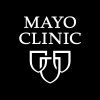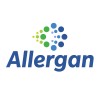
The Effects of Dietary Supplementation With Omega-3 Fatty Acids on Symptoms of Dry Eye
Dry EyeThe aim of this study is to compare ocular symptoms and signs when the test nutraceutical formulation (combination of flaxseed oil, borage oil and fish oil omega-3 fatty acids) is consumed daily over a 3 month period, with a control capsule that contains polyethylene glycol (PEG), oleic acid and propylene glycol, which are found in many pharmaceutical products and are generally considered to be biologically inert and safe. There is good evidence that the consumption of oily fish has a protective effect against dry eye, and other studies have provided evidence of the beneficial effect of supplementation with omega-3 essential fatty acids in the treatment of dry eye disease. However, there have been limited well designed clinical trials investigating the potential for nutraceutical dietary supplementation to impact ocular comfort. To date, no controlled, randomised clinical trials have been conducted to evaluate the test nutraceutical formulation. Therefore, the purpose of this study is to conduct a randomized, placebo-controlled, double-masked study to investigate the effects of dietary supplementation with a combination of flaxseed oil, borage oil and fish oil omega-3 fatty acids on ocular comfort including signs and symptoms of dry eye.

Efficacy of IPL Treatment of Dry Eye and Ocular Rosacea
Ocular RosaceaDry EyeDry eye disease (DED) is a common condition that causes ocular discomfort and reduces visual acuity. The two categories of DED are evaporative dry eye and aqueous deficient dry eye. Both conditions can involve pathology of the meibomian glands, lacrimal glands, lids, tear film and surface cells. Meibomian gland dysfunction (MGD) is the leading cause of evaporative dry eye and contributes to aqueous deficient dry eye. The goal of MGD therapy is to provide long term improvement of symptoms for patients by improving the quality of meibum, increasing meibum flow, improving tear film stability and decreasing inflammation. Commonly used therapies include preservative free drops, omega-3 fatty acid supplementation, topical cyclosporine, serum tears, topical azithromycin, oral doxycycline, moisture chambers, intraductal probing, lib margin exfoliation, automated thermal pulsation, warm compresses, among other. Despite this variety of symptoms, patients often do not experience complete or long term relief of symptoms. Forced meibomian gland expression (MGX) has been shown to be an effective method of rehabilitating meibomian glands and improving dry eye symptoms. The eyelid margins are forcefully compressed to express gland contents. Research has shown improvement in patient symptoms with the use of MGX. Intense pulsed light (IPL) have been used in dermatology to treat various conditions. Patients with DED who have tried other therapies and found no relief, often resort to IPL as a last resort. Research has shown IPL alone may be effective in improving patient symptoms. In addition, such studies have failed to show significant adverse events with the use of IPL. Here, we propose a prospective, randomized, case controlled clinical pilot study to examine the efficacy for both subjective and objective measures. 20 patients with DED will be recruited and will be randomly assigned to one of two groups: MGX alone or MGX with IPL. Objective measures will include tear cytokine levels, impression cytology, meibography, tear osmolarity and others. Subjective measures will include quality of life screening tools. We hypothesize that the use of MGX with IPL will lead to greater improvement in subjective dry eye symptoms and objective measures. Given the lack of adverse effects reported in the literature, we do not anticipate adverse effects in our study. Rochester staff Drs. Faustch and Bourne are providing clinical research advice but have no contact with subjects or biospecimens.

Effect of an Oral Supplement Containing Omega-3 and Omega-6 on Dry Eye Symptoms
Dry EyeThis study will investigate the effectiveness of two oral supplements on the ocular signs and symptoms in symptomatic dry eye patients. Eligible participants will be given one of two oral supplements to take once a day for up to three months.

Optive Brand For Day And Night Dry Eye Management
Dry EyeThis is an open label study of Optive eyedrops and gel combination for day and night dry eye management

Evaluate the Efficacy and Safety of LO2A Eye Drops for Symptomatic Improvement of Dry Eye in Patients...
Dry Eye Due to Sjögren's SyndromeDry eye complaints occur in 5.5 to 33.7% of the population, and are ranked as the most frequent symptoms of patients visiting ophthalmologists. Dry eye syndrome is caused by the reduced production and/or improper quality of the tear film. One of the causes of reduced tear production is Sjögren's syndrome. Sjögren's is estimated to affect up to 4 million patients in the US alone. It affects mostly middle aged women (40-50 years of age) with a female to male prevalence ratio of 9:1. The current study seeks to evaluate the safety and efficacy of LO2A ophthalmic solution in the symptomatic treatment of dry eye in patients with Sjögren's syndrome. This study will be conducted in compliance with the protocol, GCP,and applicable regulatory requirements.

CyclASol for the Treatment of Signs and Symptoms of Dry Eye Disease (DED)
Dry Eye DiseaseThe objective of this study is to assess the efficacy, safety, and tolerability of CyclASol Ophthalmic Solution in comparison to vehicle for the treatment of the signs and symptoms of DED.

A Two Comparator, Controlled Phase 3 Study in Patients With and Without Evaporative Dry Eye
Dry Eye SyndromesOmega 3 (OM3) Tear is a new unit dose emulsion, containing flaxseed/castor oil, which is being developed by Allergan. It is desirable to understand the effect that this new emulsion has on tear film evaporation and tear lipid profile via interferometry, in patients with evaporative dry eye (EDE) and those without (non-EDE). It would also be valuable to evaluate the retention time of the lipid components of the new emulsion via tear collection and analysis in EDE and non-EDE patients

A Study to Evaluate AXR-159 Ophthalmic Solution in Patients With Dry Eye Disease
Dry EyeProtocol AXR201701 is a multicenter, double-masked, vehicle-controlled, randomized, parallel group study carried out in 2 stages (Stage 1: AXR-159 Ophthalmic Solution (30 mg/mL or 50 mg/mL); Stage 2: AXR-159 Ophthalmic Solution (3 mg/mL, 30 mg/mL or 50 mg/mL) in approximately 430 patients diagnosed with dry eye disease (DED).

Evaluation of Systane Complete for the Treatment of Contact Lens Discomfort
Contact Lens DiscomfortDry EyeClinicians commonly use artificial tears off label for treating contact lens (CL) discomfort and the dry eye associated with CLs because new artificial tear formulations have the potential to outperform the available CL rewetting drops. While off-label, McDonald et al. have previously shown that using a common artificial tear, Systane Ultra, before and after CL use is an effective means for treating daily disposable CL wears who have CL discomfort. Recently, a new formulation of artificial tears, Systane Complete, was released to the market. Systane Complete is a unique formulation that has combined elements from both Systane Ultra (indicated for aqueous deficient dry eye) and Systane Balance (indicated for evaporative dry eye) to create an artificial tear with an indication for aqueous deficient, evaporative, and mixed (both aqueous deficient and evaporative) dry eye. Thus, the goal of this study is to determine in a randomized clinical trial if Systane Complete is able to effectively improve the symptoms of patients who have CL discomfort.

A Multicenter Study Evaluating AZR-MD-001 in Patients With Meibomian Gland Dysfunction and Evaporative...
Meibomian Gland DysfunctionDry EyeAZ201801 is a multicenter study of AZR-MD-001 ointment and AZR-MD-001 vehicle in patients with Meibomian Gland Dysfunction (MGD) and evaporative Dry Eye Disease (DED)
